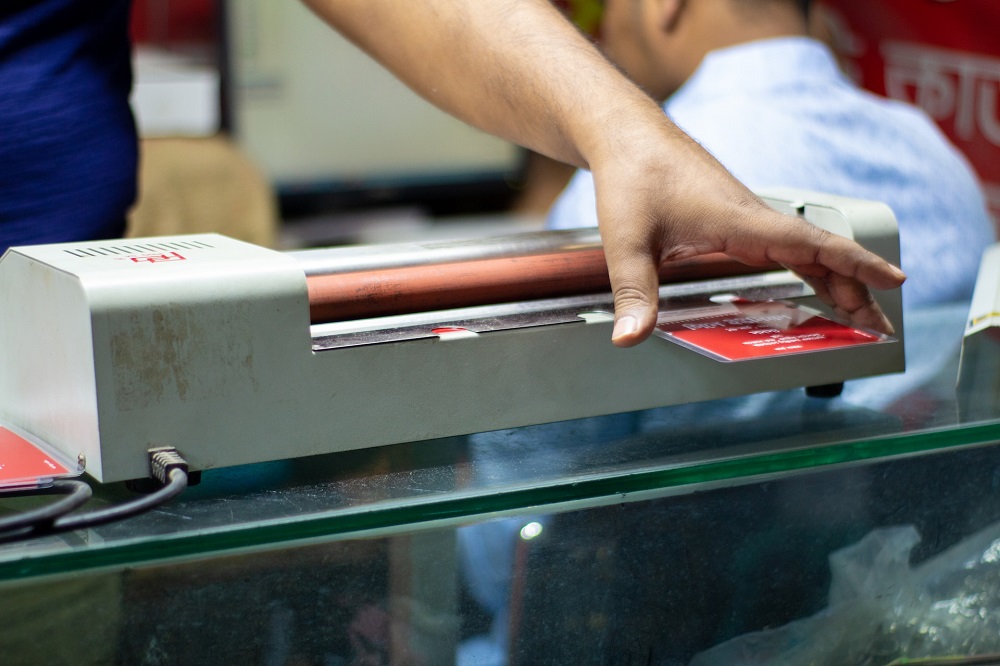Choosing The Perfect Laminator Machines | A Buyer’s Guide
Laminators are versatile machines that offer protection and enhancement to a variety of documents and materials. Whether you need to laminate important documents in the office, create durable educational resources in the classroom, or embark on creative DIY projects at home, selecting the right laminator is crucial. In this buyer’s guide, we will compare different types of laminator machines, discuss key factors to consider, and provide recommendations based on specific user needs. Let’s dive into the world of laminators and unlock the perfect match for you.
Pouch Laminators
Pouch laminators are popular for their ease of use and versatility. They use laminating pouches, which are sealed on three sides, to enclose the document. Pouch laminators come in various sizes, from compact models for home use to larger ones suitable for office settings. They are ideal for laminating standard-sized documents, photos, and cards. Pouch laminators are generally user-friendly and offer temperature control settings for different thicknesses of laminating pouches.
Roll Laminators
Roll laminators are designed for high-volume laminating tasks and professional settings. They utilise continuous laminating film rolls and provide faster laminating speeds than pouch laminators. Roll laminators are available in different widths to accommodate various document sizes. They offer precise temperature control and adjustable speed settings, allowing for customised laminating results. These machines are suitable for laminating posters, banners, large documents, and other oversized items.
Cold Laminators
Cold laminators, also known as pressure-sensitive laminators, are perfect for heat-sensitive materials. Unlike pouches and lamination roll that use heat to seal the laminate, cold laminators use adhesive backing on the laminate film. They are suitable for delicate documents, photographs, and heat-sensitive items like thermal papers. Cold laminators are typically manual, requiring hand pressure or a rolling mechanism to apply the laminate. They are easy to use, don’t require warm-up time, and are often preferred for their simplicity and versatility.
➤ Key Factors to Consider:
When purchasing laminator machines, several factors should be taken into account to ensure you make the right choice. Here are some things to consider:
Size and Capacity
Consider the maximum document size you will be laminating and choose a laminator that accommodates it. Additionally, assess the laminator’s capacity in terms of laminating thickness. Some laminators can handle thicker materials like cardstock and foam board, while others are designed for standard paper thickness.
Speed and Efficiency
Evaluate the laminator’s speed, as it directly impacts productivity. High-volume laminating tasks benefit from faster machines, while slower speeds may be sufficient for occasional home use. Find a balance between speed and the desired quality of lamination.
Temperature Control
Temperature control is crucial for achieving optimal lamination results. Look for laminators from lamination supplies that offer adjustable temperature settings to accommodate different laminating materials and thicknesses. This feature ensures consistent and professional laminating outcomes.
Ease of Use and Maintenance
Consider the user-friendliness of the laminator. Look for features like intuitive controls, clear instructions, and easy maintenance. A laminator with automatic shut-off and jam-release functions can enhance convenience and efficiency.
➤ Recommendations:
Based on specific user needs, here are some recommendations for laminators:
Home Use
For occasional laminating needs at home, a compact pouch laminator offers simplicity, portability, and reliable performance. It can handle standard-sized documents and is suitable for laminating photos, cards, and crafts.
Office Use
A roll laminator is ideal in office environments where speed and efficiency are crucial. With adjustable speed settings, precise temperature control, and the ability to laminate large documents, it ensures professional results for various office applications.
Professional Settings
A roll laminator is recommended for high-volume laminating tasks in professional settings such as print shops or educational institutions. It combines speed, durability, and advanced features like auto-feed and temperature control for superior laminating performance.
Conclusion
Selecting the perfect laminator machine involves considering factors such as size, speed, temperature control, and ease of use. Pouch laminators are versatile and easy to use, while roll laminators offer faster speeds and professional-grade results. Cold laminators are suitable for heat-sensitive materials. By carefully assessing your needs and choosing the right laminator, you can enhance productivity, protect important documents, and unlock the full potential of laminating in your desired setting.
Akshay Sharma
Latest posts by Akshay Sharma (see all)
- 5 Critical Things You Must Know for Professional Custom Badge Quality: An Expert’s Guide - November 3, 2025
- Are You Using a Loan Calculator for Second Hand Car Rightly? - October 13, 2025
- Round Steel Tanks: Long-Term Solutions for Water Storage - September 19, 2025
- Embrace the Culture: Syna World Hoodie and Syna World Tracksuit UK - September 13, 2025
- Comfort and Style: The Best Boys Hoodies for Active Kids - September 10, 2025
- Mastering the Craft: Behind the Scenes of a Successful Photo Studio
- Efficiency And Professionalism | Bond Paper in Office Environments

